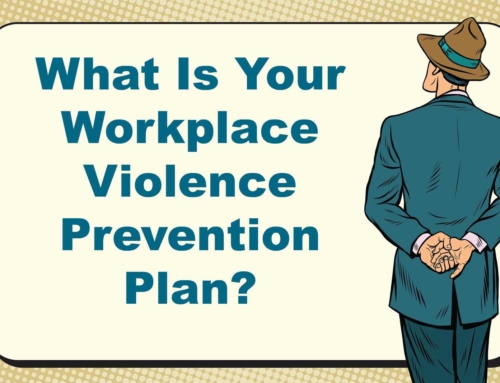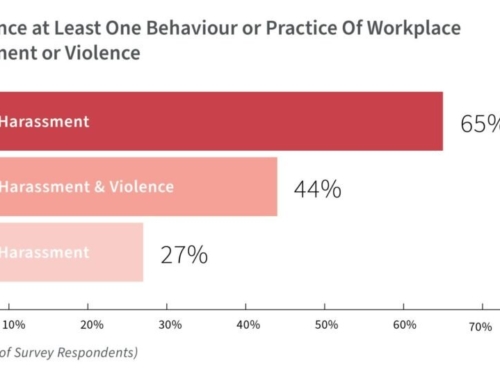This article gives HR Managers the essential skills to begin respectful workplace training. Fiore Group Training is a recognized leader in improving workplace environments with effective bullying and harassment training. If you are interested in learning more about implementing harassment prevention training or workplace violence prevention training in your organization, please read this article.
I was recently discussing a Respectful Conduct in the Workplace training that our firm was delivering to a client. It’s funny how life has a habit of connecting the dots sometimes.
In every client engagement, it’s crucial to understand the nuances of the client organization and to know whether our services have been requested proactively, or as a result of a bad situation.
Unfortunately, on this occasion it was the latter.
My client shared that a recent hire had come forward to discuss a horrible introduction to the organization by another employee, who was originally assigned as a mentor of sorts. The behaviour which occurred, easily made the Top Ten list of Bullying and Harassing behaviours.
The new employee suffered shaming, humiliating, and embarrassing situations— many of which appeared to have ritualistic elements with the perceived goal of “initiating” him into the work team.
Hearing this story, I immediately had a flashback to when I arrived at Notting Hill Police Station in the late 1970s as a young police constable, and it was commonplace, back in the day, to assign new rookies specific tasks that were usually a comical and light-hearted as a way of saying “Welcome to the team.”
The trouble with the current conversation I was having with this Human Resources Director client was that it was 2018 and the “initiation” certainly wasn’t comical and light-hearted.
Although an investigation had occurred, and the perpetrators were dealt with, the harassment and bullying caused a great deal of angst throughout the entire organization, which then underwent a tumultuous period which caused many employees to look for work elsewhere.
Something important surfaced during the investigation. It was discovered that that the organization’s onboarding program was fundamentally flawed.
At the time, the company dedicated just a half-day to new employee orientation: a code-of-conduct review, a bullying and harassment video, a safety demonstration, and mounds of paperwork. Before the lunch hour hit, new hires were whisked off to their departments and set free, never to hear from HR again until performance review time or some other exigency.
In this case, that ‘some other exigency’ arose when our harassed employee was convinced by a friend to speak to someone within the organization about the disrespectful “initiation” experience—thus leading to the investigation.
If organizations are really serious about creating a culture where everyone feels welcome and encouraged to perform at their very best, a half-day “Welcome to the company!” session, followed by “Off you go…see you at your retirement party!” simply won’t do. You might just take a look around at other companies’ best practices. There is no point in reinventing the wheel…
And while some organizations have very robust onboarding practices, which may include site visits to other corporate locations, rotations to different divisions, and meetings with senior executives, it doesn’t have to be that complicated.
Starting small is always best, and the key first step is making sure that ongoing conversations are happening at regular intervals, and spontaneously. The easiest way to engage new hires and keep them on track, while furthering a culture of respect and ensuring a smooth transition into their new role, is to implement specific conversations at 30, 60, and 90-day intervals to identify any roadblocks as quickly as possible. As an example, John Deere implemented a program for their new team members, holding detailed conversations at one month, six month, and one year intervals.
And if you’re at a loss of where to start, try having face-to-face conversations using some of the questions that are listed below. But remember, organizations must be prepared to seriously listen to the answers and address any shortcomings in individual performance or organizational challenges that may be hindering productivity.
It doesn’t take a great deal of time, and it can certainly take care of problems proactively. Had my client’s organization had a system in place like this, it’s highly likely (nothing is guaranteed of course) that they would have unearthed this harassment nightmare earlier (or been able to prevent it by ensuring everyone is aware of respectful conduct practices).
So, without further ado, here they are…
One-on-One Follow-Up Questions:
- What do you like about the job and the organization so far?
- What are the highlights of your experiences so far?
- Tell me what you don’t understand about your job or about our organization at this point in your career with us?
- Have you faced any surprises since joining us?
- What could we have done differently during the hiring process to prepare you better for your new role?
- Do you have access to the appropriate tools and resources? Do you feel you haven’t been sufficiently trained in any aspects of your job to perform at a high level?
- How do you see your job relating to the organization’s mission and vision?
- What can the organization do to help you become more successful as you transition further into your role?
- Have you experienced any surprises, disappointments, or “aha” moments?
- How would you describe the general tone from your co-workers?
- Which co-workers have been particularly helpful since you arrived?
- Who do you talk to when you have questions about your work? Do you feel comfortable asking?
- Have you had any uncomfortable situations or conflicts with supervisors, co-workers, or customers?
- Does your supervisor clearly explain what the organization expects of you?
- Do you believe your ideas and suggestions are valued?
- In retrospect, what could we have done differently in terms of setting your overall expectations appropriately for working in our company, and for your job specifically?
- How would you grade us in terms of our onboarding program, and what suggestions can you share that would make our program stronger?
Daniel Pink’s book, Drive spoke to the fact that employees need to feel a sense of Mastery, Autonomy, and Purpose in their work experience.
Having a process in place like this moves you much closer as an organization to achieving all three.
Phil Eastwood is a former London Bobby who brings a thirty-five year career in policing to his role as Senior Partner of Fiore Group Training. Phil is lead author of workplace training courses in respectful workplace training, workplace violence employee training, and leadership training seminars. Fiore Group Training is a recognized leader in training top North American organizations.







Leave A Comment